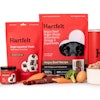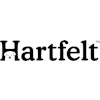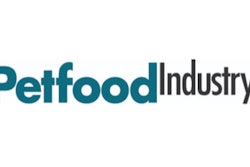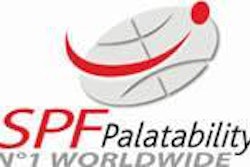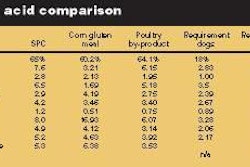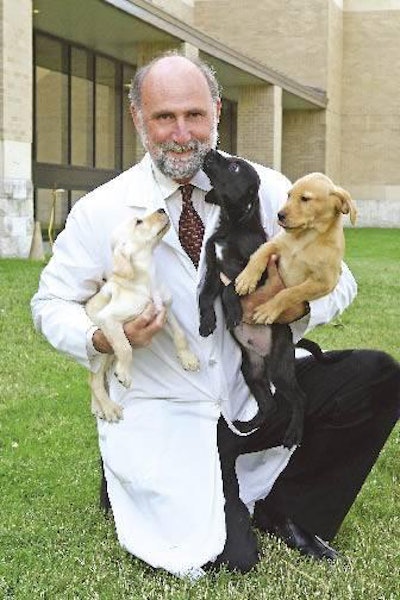
Manufacturers of petfood tend to focus on one main goal: to produce a safe, healthy product that cats and dogs will enjoy eating and continue eating for many years. To accomplish this goal, manufacturers spend a lot of time and money on R&D. Based on the results of this costly and time-consuming research, new and innovative petfoods are developed. In some cases, these foods have the ability to prevent certain disease states, prolong life and improve quality of life for many animals around the globe.
We were interested to find out just what veterinarians thought about current commercial petfoods, as well as what they thought the future of nutrition might entail. Petfood Industry asked several veterinarians to respond to several questions about dog and cat foods today.
Q: What is the most common question your clients ask you about petfoods? What sources of information do you use to answer these questions?
Bauer: The question I am asked most is, "What is the best food to feed my pet?" I rely on the published literature. Also, scientific publications and actual data from authors working for petfood companies in collaboration with university and other scientists are helpful. I try to help pet owners separate marketing-based material from the science-based information.
Buffington: They ask what to feed their pets. I use my own experience, biomedical literature, the Internet and colleagues as sources of information as well.
Remillard: I am asked about ingredients. My information sources are usually the AAFCO manual or FDA website.
Robb: Usually, they ask if the food they are currently feeding is good or not. Honestly, I generally shoot from the hip. I don't really read too much about petfood, although I receive lots of information from many sources. Sometimes I receive information from one client on what is working and pass it on to another.
Q: How do you decide which petfood to recommend to your clients? How could the industry help you make the best decision?
Bauer: I address my responses to pet owners specifically for their situations. The petfood industry should continue to partner with the veterinary profession at many levels (practitioner, university, organized associations and the media) to maintain effective lines of communication appropriate to each group. Much of the new information on pet nutrition is proprietary. However, at some point in time, the industry should consider releasing some of this information to communicate nutritional advancements made by them to a broader group.
Buffington: Again, I use my own experience in making these decisions. I don't know if there really is a best decision.
Remillard: It depends on whether you are talking about healthy or sick animals. For healthy pets, anything that has passed AAFCO feeding trials is worthy of trying. For sick pets, whatever diet best fits their medical condition or conditions is recommended.
Robb: I generally tell them to stick with a name brand food like Iams, Eukanuba, Purina or the like. I recall problems in cats when some "off" brands did not have enough taurine and problems were seen. It made me feel that name brands were better. My faith in any industry is so low these days it's difficult. Companies say a lot of things, but what is really true? Building integrity and trust would be key to me.
Q: Are petfood manufacturers meeting the needs of pets today? What could the industry be doing better?
Bauer: I think responsible petfood manufacturers are meeting the needs of pet owners. They are developing petfood products that owners can relate to on a personal level. Many companies are taking a proactive approach to the benefits and responsibilities of pet ownership beyond nutrition as well, which also helps elevate the health status of both people and their pets.
A commitment to advancing nutrition research should be high on the list of things that the petfood industry as a whole should be investing in. Have some kind of a check-off' program whereby some small amount of the sale price of each bag or can of food could be donated to a research fund or foundation. This research could then be conducted freely, without any perception of company bias or conflict of interest at all levels. Such a program would allow more rapid advancement of the science-based information that we sometimes find lacking on certain nutritional topics.
Second, any significant effort to help separate fact from fiction regarding pet animal nutrition for busy veterinary practitioners, groomers, breeders and pet owners will have an important multiplier effect on pet health, the human-animal bond and, ultimately, everyone involved in pet ownership. This could be in the form of print or electronic media, seminars, owner forums, etc. Peer review of this type of information would help assure its accuracy and usefulness.
Buffington: Yes, they are. I would recommend that manufacturers fund more research to provide evidence for the many unsupported claims made by marketers.
Remillard: Probably, although most pet owners do not seem to believe it. The petfood industry could better explain their industry practices and ingredient sources to the pet owner.
Robb: My gut feeling is that they are. It is not that one food is so much better than another, but what works best for that animal. I think if companies put live people on the phone I would feel better about calling and getting information. The Hill's company does a good job of this. If other companies had a similar hotline, I would call more.
Q: What petfood product would you like to see available to pet owners? What's missing in the marketplace today?
Bauer: Obesity and its related health risks and problems continue to be the most frequently seen nutritional disorder in companion animals. The development of products to aid in the prevention and treatment of obesity, along with simple strategies to assure owner compliance and monitor progress, is needed.
Buffington: Products that are based on real evidence (funded by independent sources, published in the peer-reviewed literature for a start). Space on the shelves would help. A visit to a local pet store with 85 veterinary students left us all overwhelmed with the number of products crowded together and clamoring for our attention, which I imagine is where the temptation for unsupported claims arises.
Remillard: True weight loss, weight management or obesity preventive diets.
Robb: I think even I would like to see a greater focus on dental products. In other words, foods that help the teeth, especially in cats and small breed dogs.
Q: What trends are becoming more common in your practice? What do you expect to see happen in the future of petfood and pet nutrition?
Bauer: Various niches have developed, many in parallel with owner lifestyles. Functional ingredients in foods will likely continue to be an important aspect of pet nutrition, as is the trend toward holistic-type products. Food safety will also continue to be important. Further out will be the use of molecular biology to help pinpoint specific metabolic traits in an animal or breed that will then help provide information on the best food to feed that particular dog or cat.
Buffington: Trends seem to depend on the economy. As Werner Heisenberg [the founder of quantum mechanics and the uncertainty principle] said: "Predictions are dangerous, especially about the future."
Remillard: Clients are asking more about nutrition. General practicing veterinarians cannot adequately answer those questions. Clients will seek out nutritional advice from nutritionists and sources other than their general or local vet.
Robb: I have noticed humanization and the move toward more organic products. I believe the public values animals more and more.
